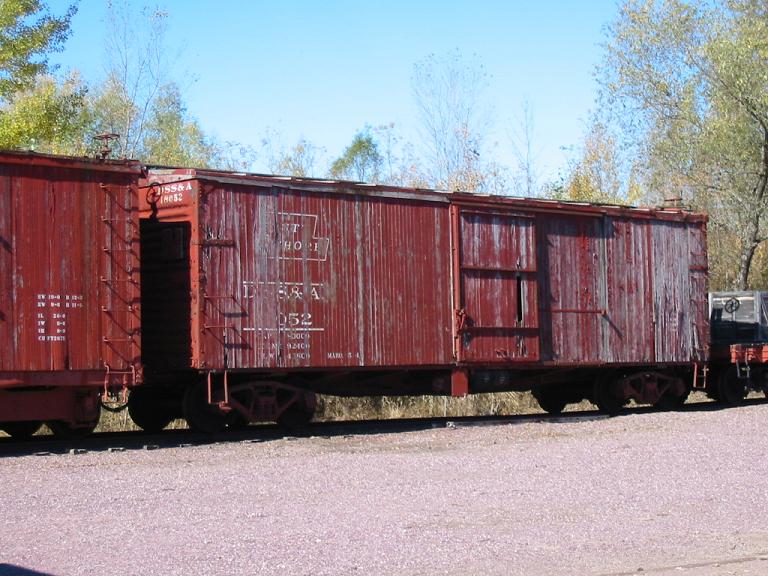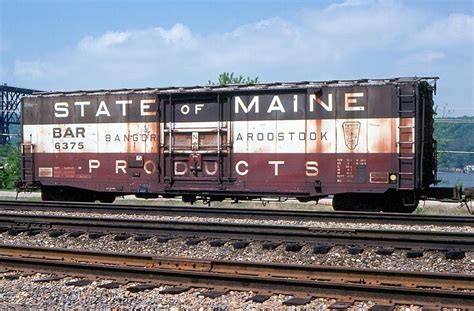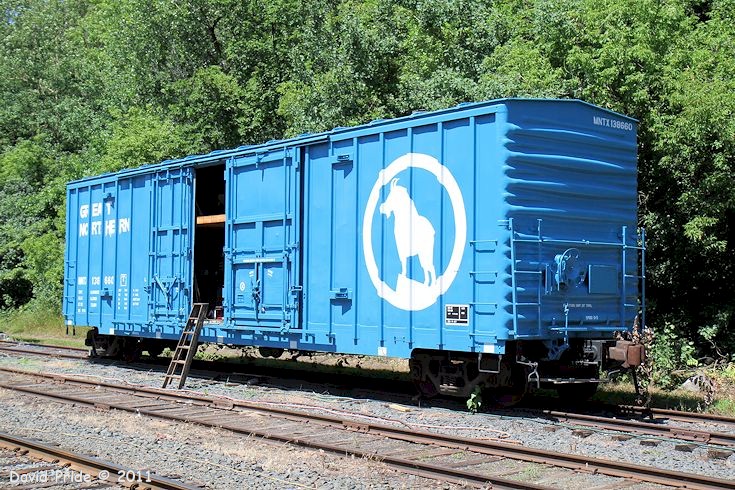In his Trains blog, George Hamlin discusses the changing colours of the ordinary railway boxcar in the brief era between post-war prosperity and the economic disasters of the 1960s and 70s:

Pre-war Duluth, South Shore & Atlantic boxcar number 18052 at the Mid-Continent Railway Museum.
Photo by Sean Lamb via Wikimedia Commons.
The advent of streamlining in the 1930s started to blow historic convention with regard to car colors away on the passenger side of railroading, but had little impact on freight operations prior to World War II. Following that conflict, however, some of the industry began to consider livening up the equipment that produced much of the revenue (and most of the profits) from which they derived their economic existence.
Some railroads also adopted more colorful boxcar paint schemes to promote special aspects of their freight service: the B&O had special schemes for both their “Sentinel” and “Timesaver” services; another example was the Missouri Pacific’s blue and gray (the road’s modern-day passenger colors) for their Eagle Merchandise Service. The Bangor & Aroostook had boxcars with red, white and blue horizontal stripes advertising products emanating from their home state, Maine.
Bangor and Aroostook boxcar 6375 in “State of Maine” paint scheme.
Image originally from Panoramio, but no user information provided.Another example was the large fleet of New York Central’s “Pacemaker” boxcars, adorned in a combination of bright red and gray. Early on, the NYC even ran solid trains of this equipment in an expedited service which was designed to re-capture LCL (less than carload lot) traffic from the increasingly competitive motor trucking industry. (Interestingly, the NYC also had a color they called “Pacemaker Green” that was used for the pre-World War II all-coach New York-Chicago service, as well as on the road’s initial orders of non-stainless steel streamlined coaches.)
In the late 1950s, the Central introduced a more radical change, and began painting its boxcars in a Jade Green color (“Century Green”, according to the railroad) that was quite a dramatic change from boxcar red. The Great Northern also adopted a similar shade. CB&Q boxcars still had the same basic hue, but now they came in a brighter version dubbed “Chinese Red”.
By the 1960s, a number of roads had livened up their freight car liveries; the modestly-sized Reading utilized bright green and beige/yellow for both freight cars and locomotives. Late in its career as an independent railroad, the Great Northern adopted the striking bright “Big Sky Blue” for both passenger and freight cars. At its formation in 1976, Conrail adopted “traditional red oxide” as its choice for freight cars, however, sticking with tradition (and reversing the NYC’s earlier efforts).





